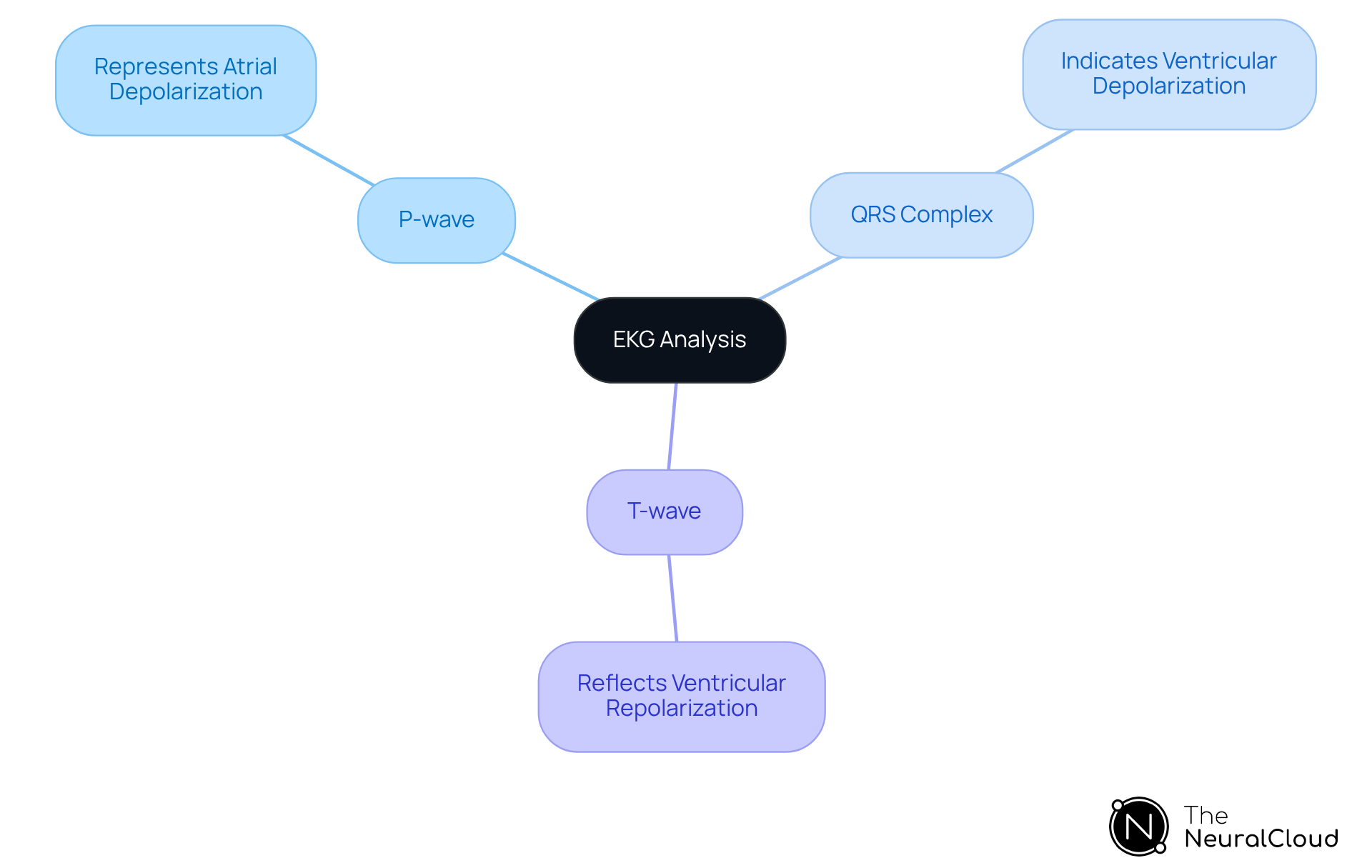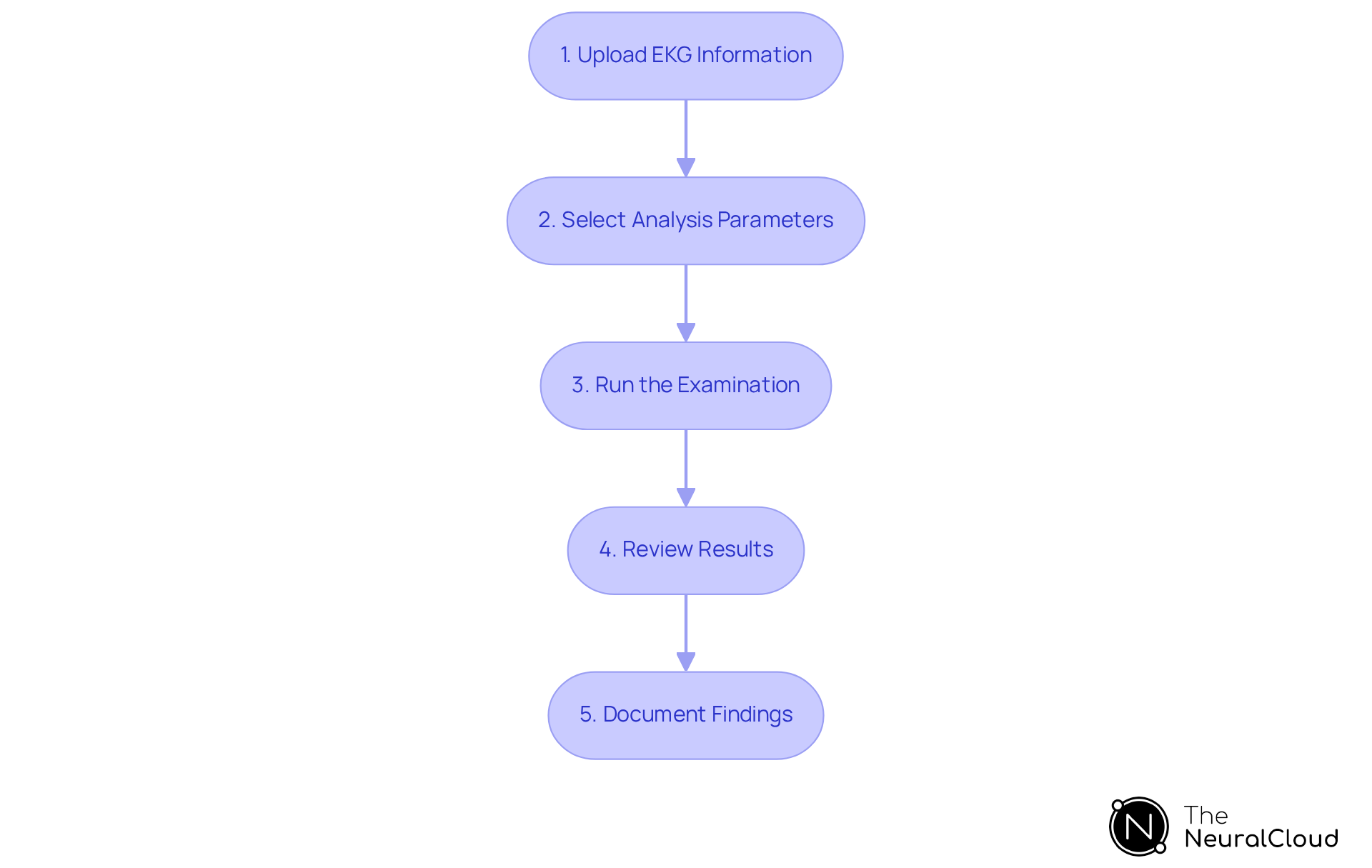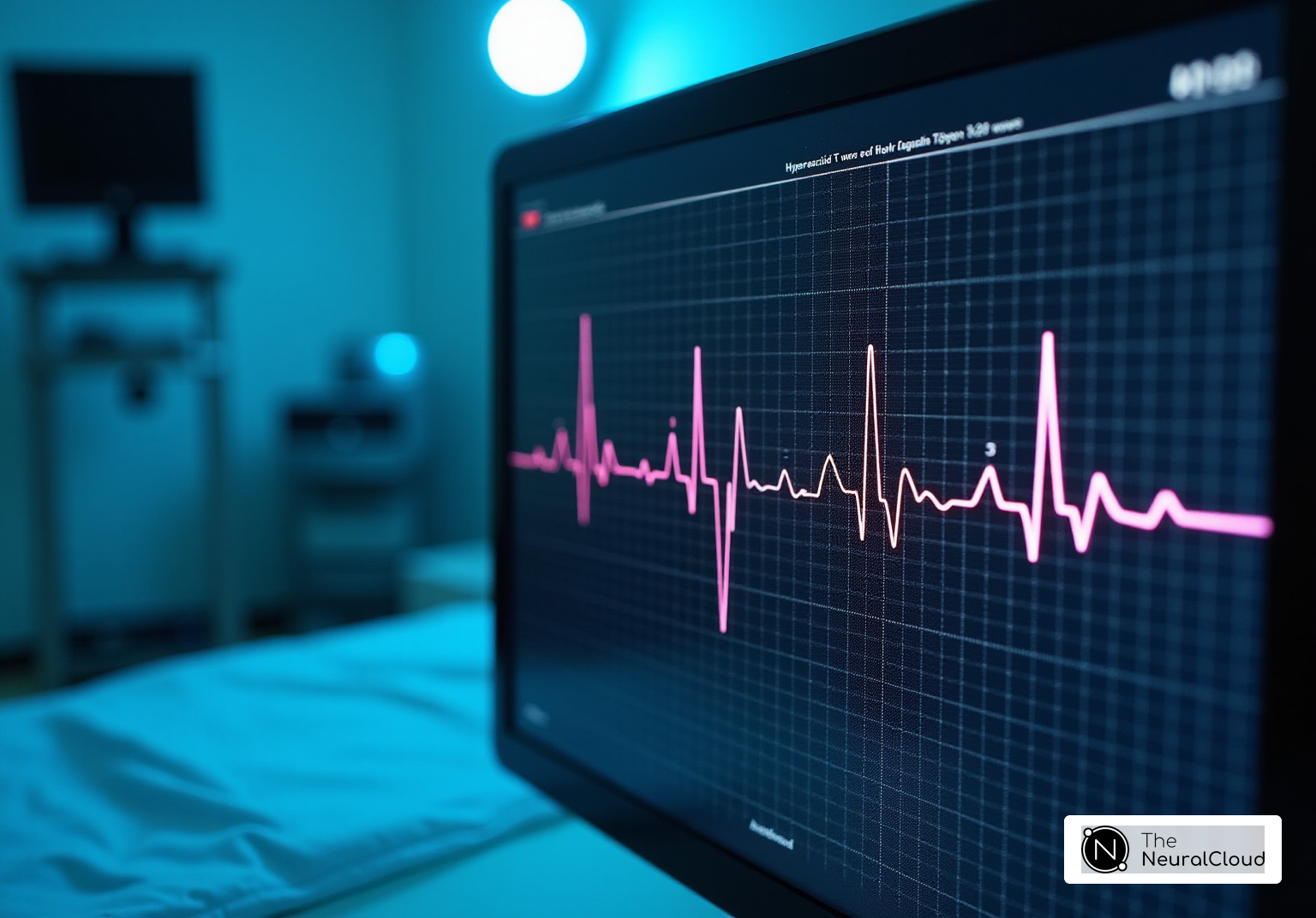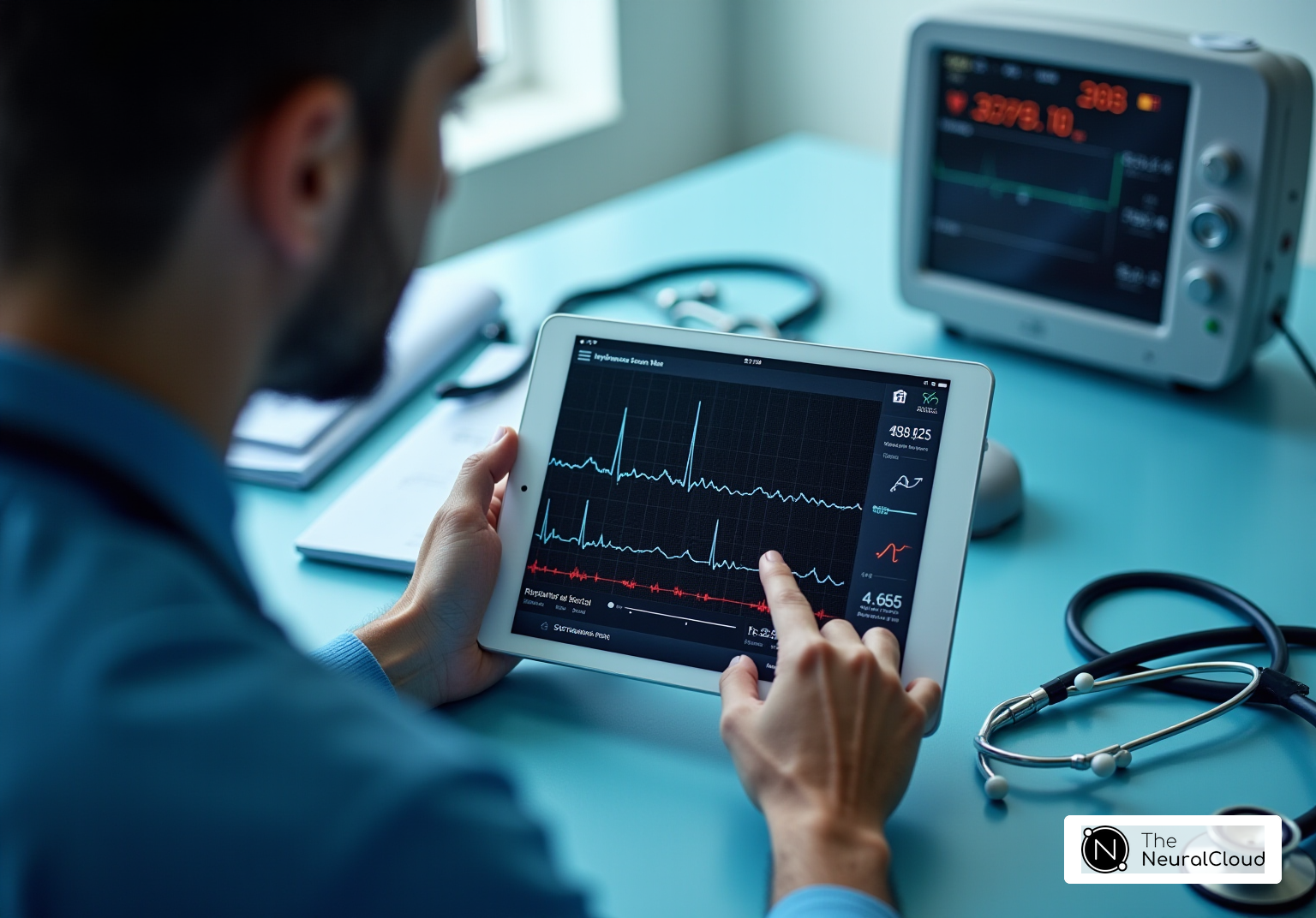Overview
The article presents a systematic approach to effectively analyze EKGs utilizing MaxYield™ technology. It underscores the significance of grasping EKG components, preparing essential tools, and adhering to a structured methodology. Each step of the analysis process is meticulously detailed, encompassing:
- Data upload
- Parameter selection
- Troubleshooting common challenges
This comprehensive outline enhances the clarity and accuracy of EKG evaluations, ultimately benefiting healthcare professionals in their diagnostic efforts.
Introduction
The heart's rhythm communicates a unique language, illustrated through the intricate waves of an electrocardiogram (EKG). For healthcare professionals, mastering EKG analysis transcends being merely a skill; it serves as a crucial gateway to comprehending patient health. This article explores the transformative potential of MaxYield™ technology, providing a step-by-step guide designed to enhance EKG evaluations. As the complexity of cardiac signals escalates, ensuring accurate interpretations amidst potential pitfalls becomes paramount. Discover essential strategies that promise to elevate EKG analysis and empower clinical decision-making.
Understand the Basics of EKG Analysis
To effectively analyze EKG, it is essential to understand the basic components of an electrocardiogram. An EKG measures the electrical activity of the heart, displaying it as a series of waves. The key components include:
- P-wave: Represents atrial depolarization.
- QRS complex: Indicates ventricular depolarization and is crucial for identifying arrhythmias.
- T-wave: Reflects ventricular repolarization.
Familiarizing yourself with these components will assist in accurately interpreting the data produced by the MaxYield™ platform. This system enhances the analysis process by mapping ECG signals through noise, isolating, and labeling key features in every heartbeat. Its advanced noise reduction features convert noisy recordings into detailed insights, enabling beat-by-beat examination of 200,000 heartbeats in under 5 minutes. This capability not only aids in identifying cardiac events but also supports confident clinical decisions when doctors analyze EKG.
Furthermore, to effectively evaluate the situation, it is essential to analyze EKG patterns and irregularities, such as atrial fibrillation or ST elevation, particularly when employing specific tools. The MaxYield™ platform provides healthcare professionals with the necessary resources to navigate these challenges, ensuring a comprehensive understanding of EKG analysis.

Prepare for EKG Analysis: Tools and Techniques
Before commencing your EKG analysis with MaxYield™, a transformative platform designed for healthcare professionals, it is essential to gather the following tools and prepare your environment:
- MaxYield™ Platform: Ensure access to the software that provides automated, scalable, and AI-driven solutions for ECG evaluation. Proper installation on your device is crucial. The platform features sophisticated algorithms for precise interpretation and instant information processing, enhancing your evaluation.
- Compatible EKG Device: Utilize a device capable of capturing high-quality EKG signals, such as a Holter monitor or wearable device, to ensure precision in your evaluation.
- Data Transfer Method: Familiarize yourself with the procedure for transferring EKG data from your device to the platform, whether via USB, Bluetooth, or cloud storage, to streamline the process.
- Quiet Environment: Set up in a distraction-free area to concentrate on the evaluation process, thereby enhancing clarity and efficiency.
Once these tools are prepared, you can confidently proceed to the evaluation phase, leveraging MaxYield™'s advanced AI capabilities for optimal results. These preparation steps are vital for maximizing the effectiveness when you analyze EKG assessment.

Conduct EKG Analysis: Step-by-Step Methodology
To conduct your EKG analysis using MaxYield™, follow these steps:
-
Upload EKG Information: Import the EKG data from your device into the MaxYield™ platform. Ensure that the information is complete and free from corruption, as this is critical to analyze EKG accurately.
-
Select Analysis Parameters: Choose the specific parameters for analysis, such as heart rate variability or arrhythmia detection. This selection allows us to analyze EKG data to gain targeted insights.
-
Run the Examination: Initiate the examination process. The MaxYield™ platform will automatically manage the data to analyze EKG by isolating and labeling key features such as P-waves, QRS complexes, and T-waves, which are essential for thorough evaluation.
-
Review Results: After the evaluation is complete, review the output carefully. When you analyze EKG, look for any abnormalities or significant findings that may require further investigation, ensuring comprehensive assessment.
-
Document Findings: Record your observations and any relevant data points for future reference or reporting. This documentation is vital for ongoing patient care, particularly to analyze EKG.
By following these steps, you can fully utilize the MaxYield™ platform's capabilities, enhancing your EKG evaluations and improving patient outcomes.

Troubleshoot Common EKG Analysis Challenges
When you analyze EKG, various common challenges may arise. Understanding these challenges and how the MaxYield™ platform addresses them can significantly enhance your analysis experience.
-
Poor Signal Quality: A noisy or distorted EKG signal can hinder analysis. Ensure that your EKG device's connections are secure and that electrodes are correctly placed. The MaxYield™ platform offers advanced noise filtering features that assist in identifying and labeling essential information, even amidst high levels of noise and artifact. This functionality enables the rapid isolation of ECG waves from recordings affected by baseline wander, movement, and muscle artifact, improving overall signal clarity.
-
Information Transfer Problems: Difficulties in transferring information to the platform can disrupt workflow. Verify that your device is compatible and that you are using the correct transfer method. Restarting both devices may also resolve any transfer issues, ensuring a seamless experience.
-
Analysis Errors: Inaccurate data evaluation can compromise diagnostic yield. Ensure that the information is complete and free of artifacts. After addressing any identified issues, re-run the evaluation to maximize results, as the platform's algorithm improves with each use, enhancing its accuracy and efficiency over time.
-
Interpreting Results: Uncertainty about evaluation results can lead to confusion. Refer to the user manual for specific troubleshooting steps or contact support for clarification on findings.
By proactively addressing these common challenges, you can ensure a smoother experience to analyze EKG, leveraging the transformative capabilities of MaxYield™ to enhance clarity and efficiency.

Conclusion
Mastering EKG analysis is crucial for healthcare professionals aiming to enhance patient outcomes through accurate diagnostics. The integration of MaxYield™ technology streamlines the process and empowers clinicians with advanced tools to interpret complex heart rhythms effectively. By understanding the fundamental components of an EKG, preparing adequately with the right tools, and following a structured methodology, healthcare providers can significantly improve their analysis capabilities.
Key steps highlighted in this guide include:
- Familiarization with EKG components
- Preparation of necessary tools
- Execution of a systematic analysis
- Troubleshooting common challenges
Each of these elements plays a vital role in ensuring that EKG evaluations are thorough and reliable. The MaxYield™ platform stands out by offering features that enhance clarity and efficiency, making it an invaluable asset for any professional engaged in EKG interpretation.
Embracing the MaxYield™ technology and its comprehensive approach to EKG analysis can lead to more confident clinical decisions and improved patient care. By prioritizing education and preparation, healthcare professionals can overcome common hurdles and leverage advanced tools to deliver precise diagnoses. The commitment to mastering EKG analysis not only benefits individual practitioners but ultimately enhances the standard of care within the healthcare system.
Frequently Asked Questions
What is an EKG?
An EKG (electrocardiogram) measures the electrical activity of the heart and displays it as a series of waves.
What are the key components of an EKG?
The key components of an EKG include the P-wave (represents atrial depolarization), the QRS complex (indicates ventricular depolarization), and the T-wave (reflects ventricular repolarization).
How does the MaxYield™ platform enhance EKG analysis?
The MaxYield™ platform enhances EKG analysis by mapping ECG signals through noise, isolating, and labeling key features in every heartbeat. It features advanced noise reduction capabilities that convert noisy recordings into detailed insights.
What is the speed of analysis using the MaxYield™ platform?
The MaxYield™ platform enables beat-by-beat examination of 200,000 heartbeats in under 5 minutes.
Why is it important to analyze EKG patterns and irregularities?
Analyzing EKG patterns and irregularities, such as atrial fibrillation or ST elevation, is essential for identifying cardiac events and supporting confident clinical decisions.
What resources does the MaxYield™ platform provide to healthcare professionals?
The MaxYield™ platform provides healthcare professionals with the necessary resources to navigate challenges in EKG analysis, ensuring a comprehensive understanding of the data.






